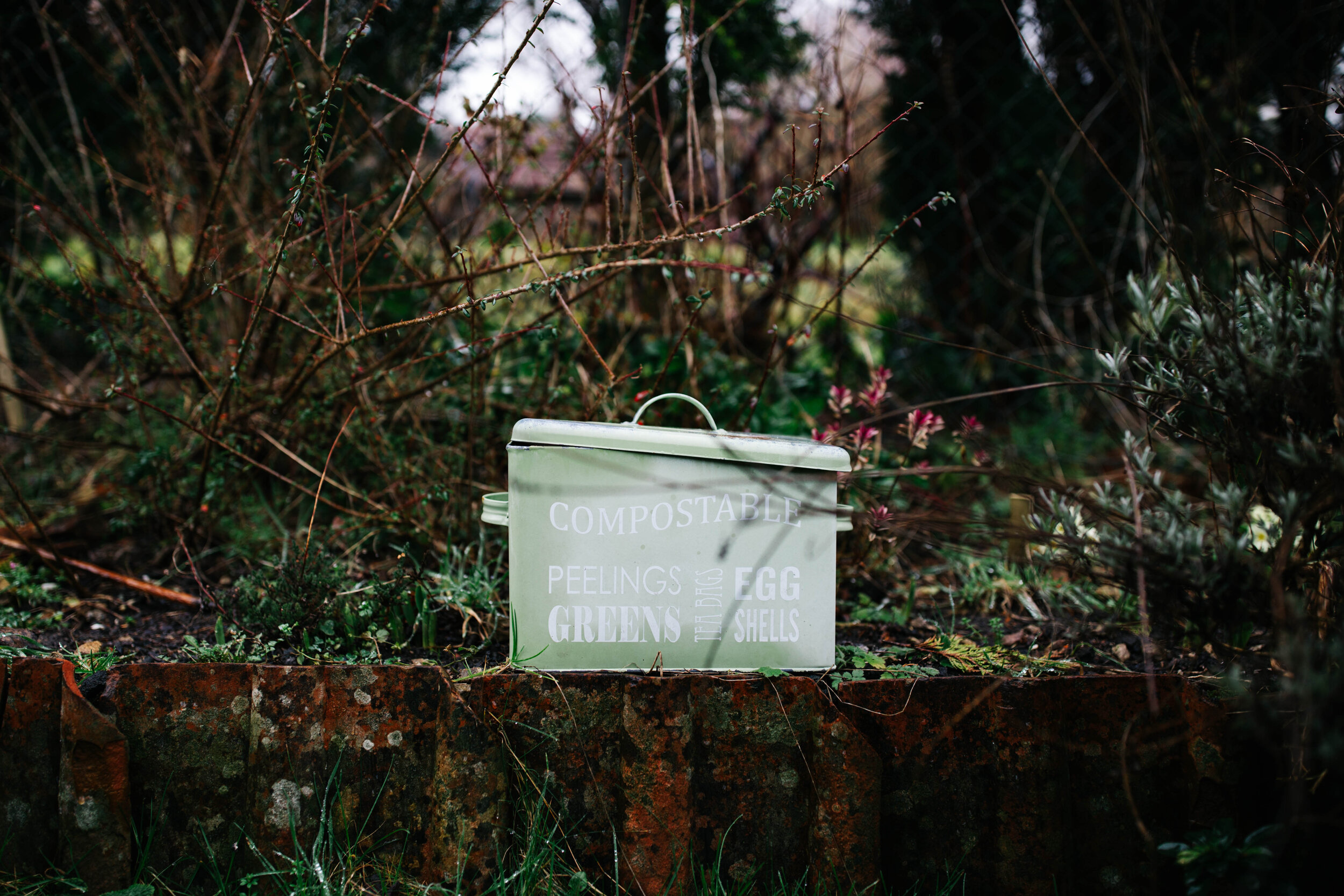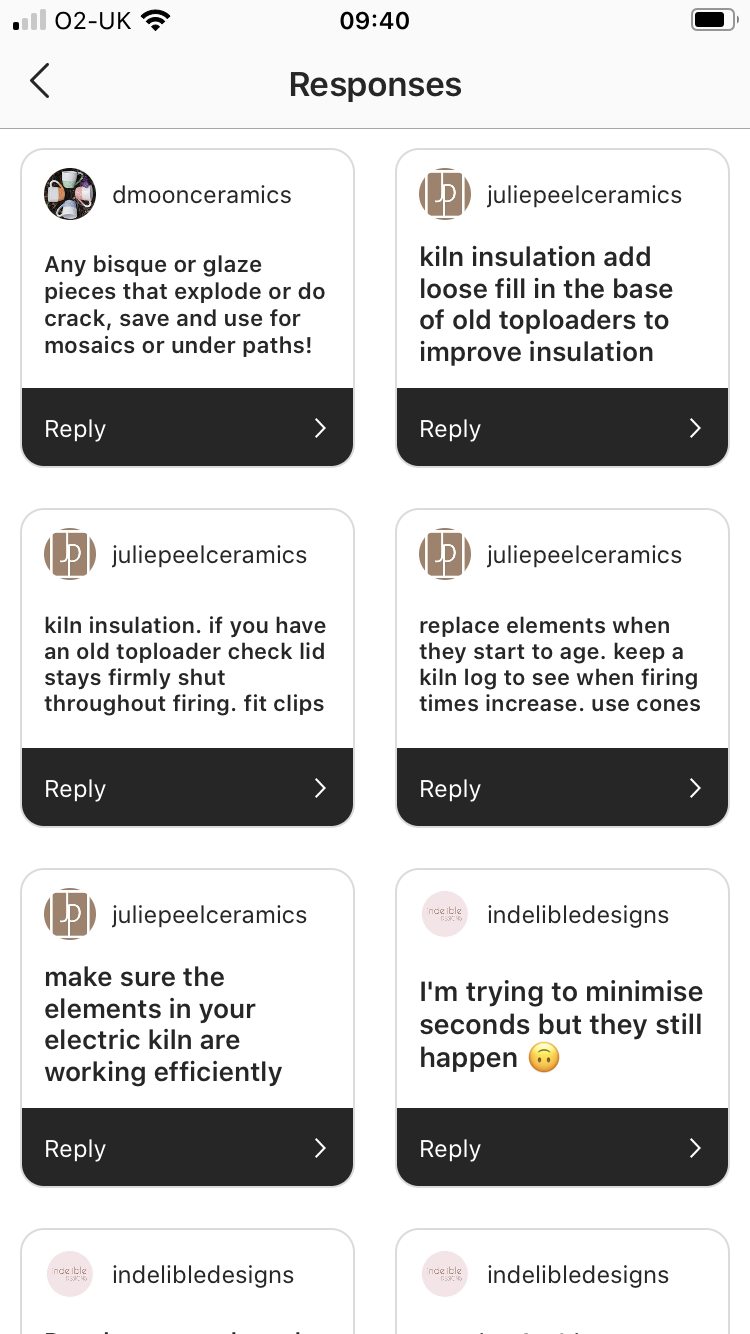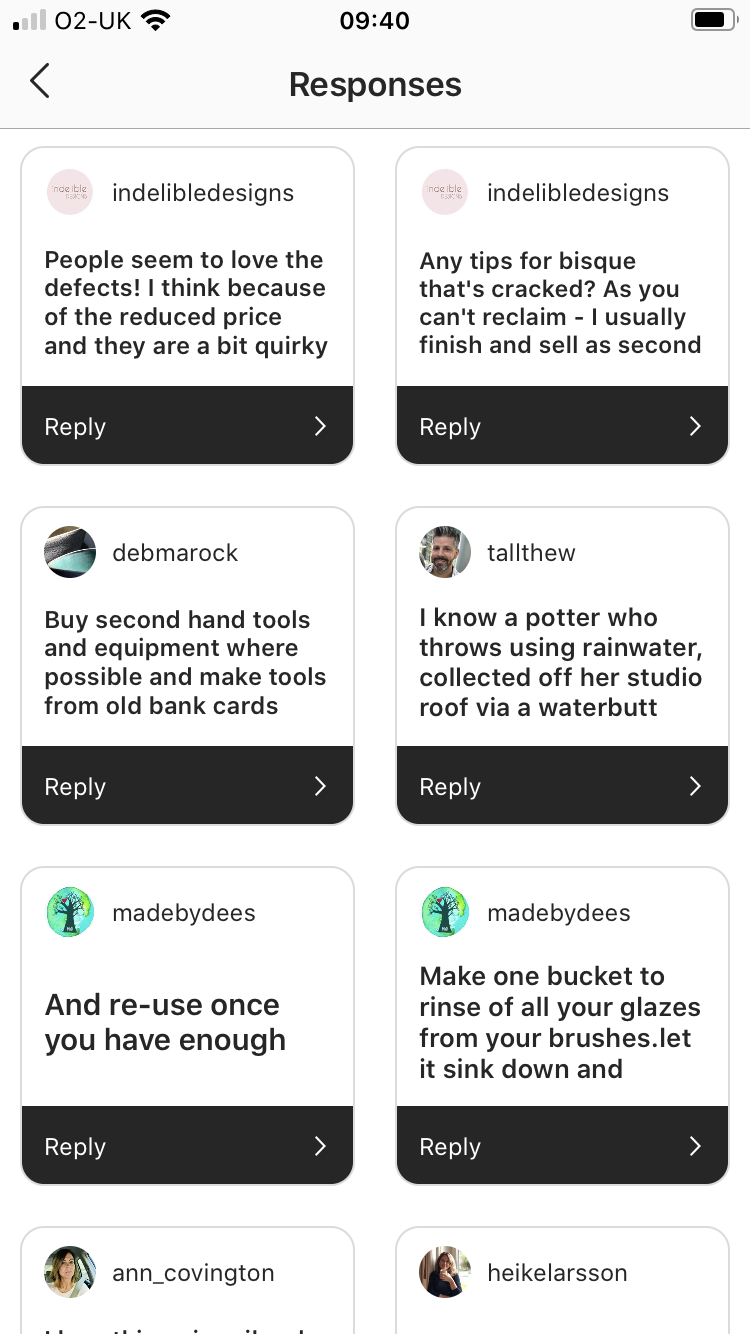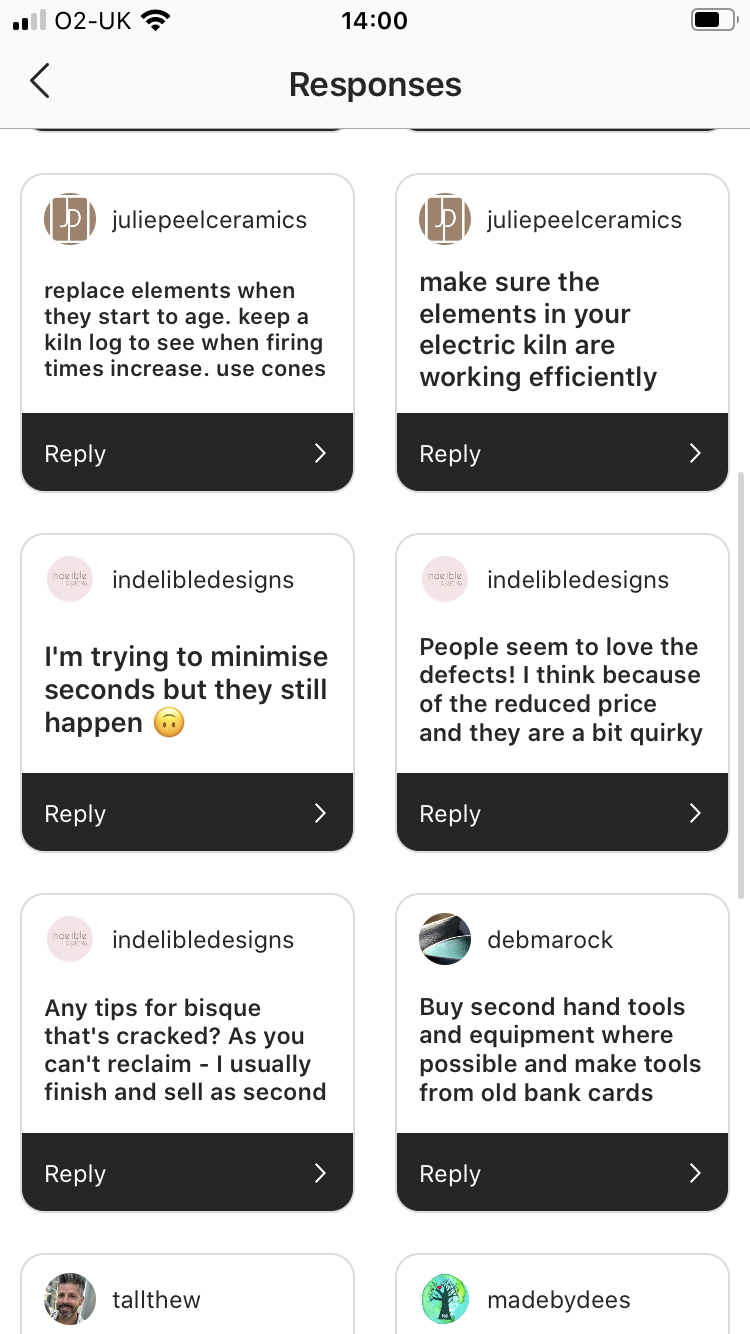How to be Green in Your Pottery Studio
…and minimise your impact on the environment.
Image by Sorbus Minima
This week I watched a panel talk ‘How can ceramics clean up their act.’ The panel comprised of Lewis Jones of Granby Workshop, Purva Chawla of MaterialDriven, and Kevin Rouff of Studio ThusThat, hosted by Craft Magazine’s assistant editor Isabella Smith. Even though the talk was centred around reducing the impact of industrial ceramics it was an excellent provocation to us - ‘the individual studio potter’ - to think about how our practice impacts the planet.
A very brief summary of the talk: Granby Workshop described how they are the first small tableware producer in the world to source all of their raw materials from the huge amounts of waste from mass produced tableware coming out of Stoke.
Studio ThusThat, born from a student collective shared with us developing ways of recycling the waste produced by the Aluminium industry to produce a clay material which could be used for tableware.
Material Driven are a design agency working to pair large companies and corporations with innovative building and architectural materials from artists and designers helping them to reduce their carbon footprints. Purva shared the enthusiasm they have for artists and designers working to change attitudes towards environmental issues.
Clay and many of the raw materials are mined from the ground and are a non-renewable resource. That is to say that one day the world may run out of clay. Yikes! Don’t panic - it will be a while before that happens but it’s true to say the natural processes which form clay cannot keep pace with the rate it is being mined.
Image by Sorbus Minima
To be clear, individual studio potters generally do not impact the environment on the scale of industrial ceramics, our work does not have a significant carbon footprint compared to mass produced tableware, but that does not exempt us from thinking about and taking responsibility for our impact - no matter how small. Many potters and artists are already in touch with the earth (quite literally) through their practices and tend to be relatively aware of environmental issues. Personally, I want to reduce the impact of my business wherever possible and encouraging new potters into the craft is a passion of mine; thus, I need to consider the compounded impact of my personal work and that of those I encourage to join in. I thought, therefore, that collating this into a blog post would be helpful to new and old potters alike. As the panel discussion centred around the fact that many leading innovations are birthed from the minds of individual artists, crafts people, students and small business owners - innovations that could eventually be picked up by the big guy - if we all work together to share our ideas, as a collective, we can make a difference.
So how can we as small makers make a difference in our day to day studio practices? Here are some recommendations and takeaways from the discussion.
Look for - and where possible work with - local materials e.g. if you’re a Cornish potter, use Cornish Clay.
Avoid using hazardous materials in your studio: Lead, Barium etc…
Lower your glaze temperatures/ choose lower firing glazes - cone 6 is greener than cone 10.
There aren’t many ways to ensure our raw materials come from responsible sources at the moment (like you see on some food packaging) but we can start asking those question to our suppliers to make sure they know we care.
Always use recycled, reused and/or eco packaging for shipping.
Monitor any waste you are producing, can it be reduced or minimised?
Reclaim all waste clay, even the trimmings which go on the floor (just sieve it before use to get rid of the hairs, fluff and bugs 🤢) Here’s a video of how I reclaim my clay.
Fire full kiln loads not half empty ones.
Don’t fire any greenware who’s integrity is in doubt hoping you can save it later: cracks = reclaim.
Switch to a green electricity supplier, choosing a 100% green tariff.
Sell any viable seconds.
Any work that cannot be saved can be smashed and used as aggregate for building and gardening.
If you see a great idea or if you have one yourself - broadscast it! Sharing it means the benefits can be multiplied (what I’m doing with this blog 😉)
Provoke and invite discussion with your work.
I put a call out on Instagram stories for more of your ideas and comments, thank you to those who shared ideas. I’ve collated them below (tap left, right to see more):
If like me you are already doing some or all of these - bravo, but our work doesn’t stop there we need to continue this conversation and keep thinking about ways we as creatives can make changes to make our world better.
As along as we have to eat we will need some kind of vessel to eat from. Whilst it’s true to say handmade pottery is not 100% without an environmental footprint (what is?!) it is a far far better option than mass produced tableware and the premium on handmade pottery encourages the customer to care for and extend the life of their pottery - there actually is no reason why it should end up in landfill. Well made ceramics can be used forever if it’s properly cared for (my nan’s dinner-sets are a testament to that )
I intend to keep adding and editing this resource so if you have any ideas, conversation or practices in addition to the above then please share in the comments. Share your ideas on Instagram using the hashtag #pottersforsustainability
Lots of love
Kara x
PS If you enjoy my blog, found it helpful or inspiring - take a moment to consider joining my Pottery Club. My Pottery Club is a place where I share even more insights into my little pottery world - real time video pottery tutorials, lessons and learnings from my 15 Years of potting, PLUS limited edition work and seconds sales and in return you will be supporting your fav artist 😉 You can join and support my work from as little at £3.50 per month - I’d love to see you there!








